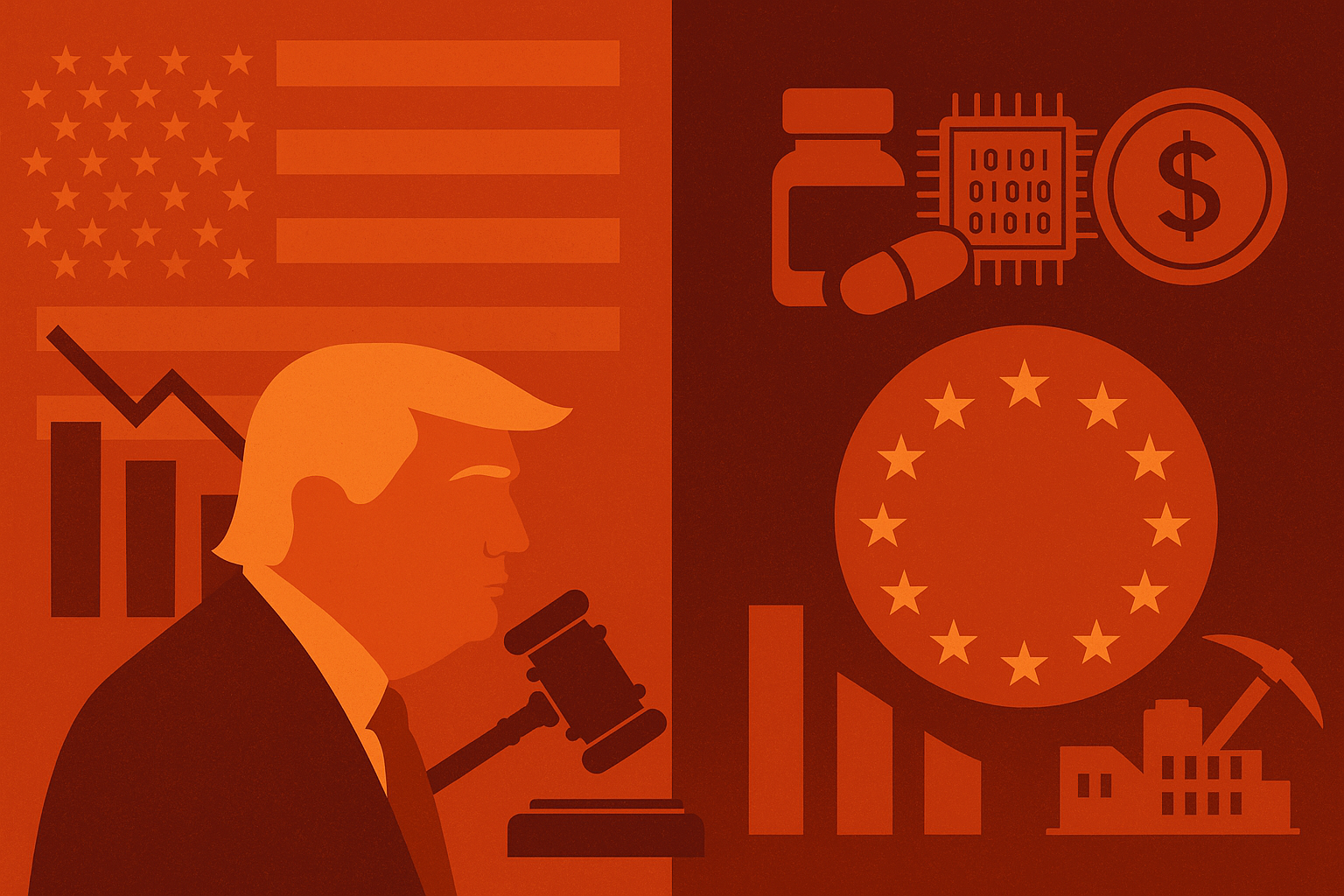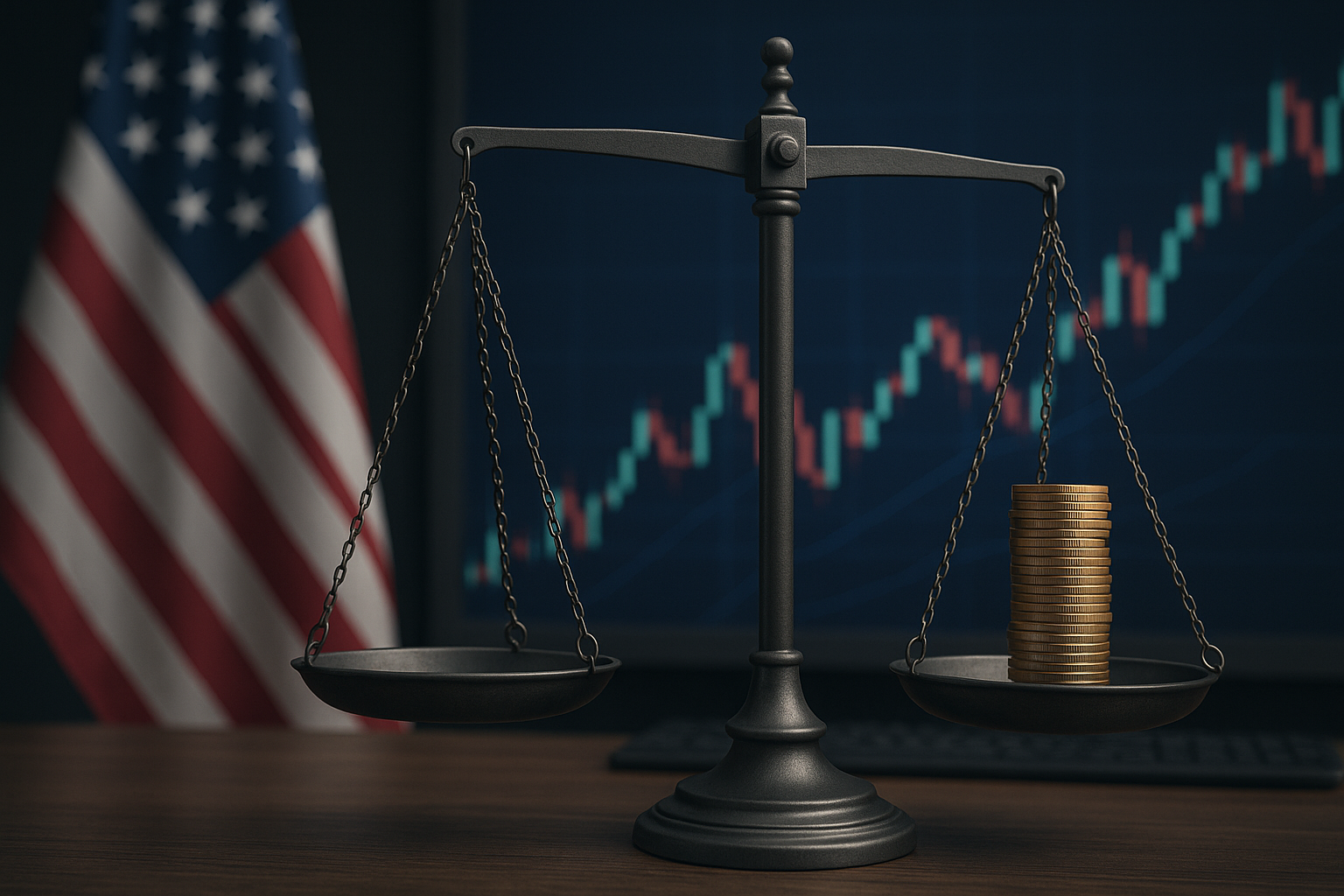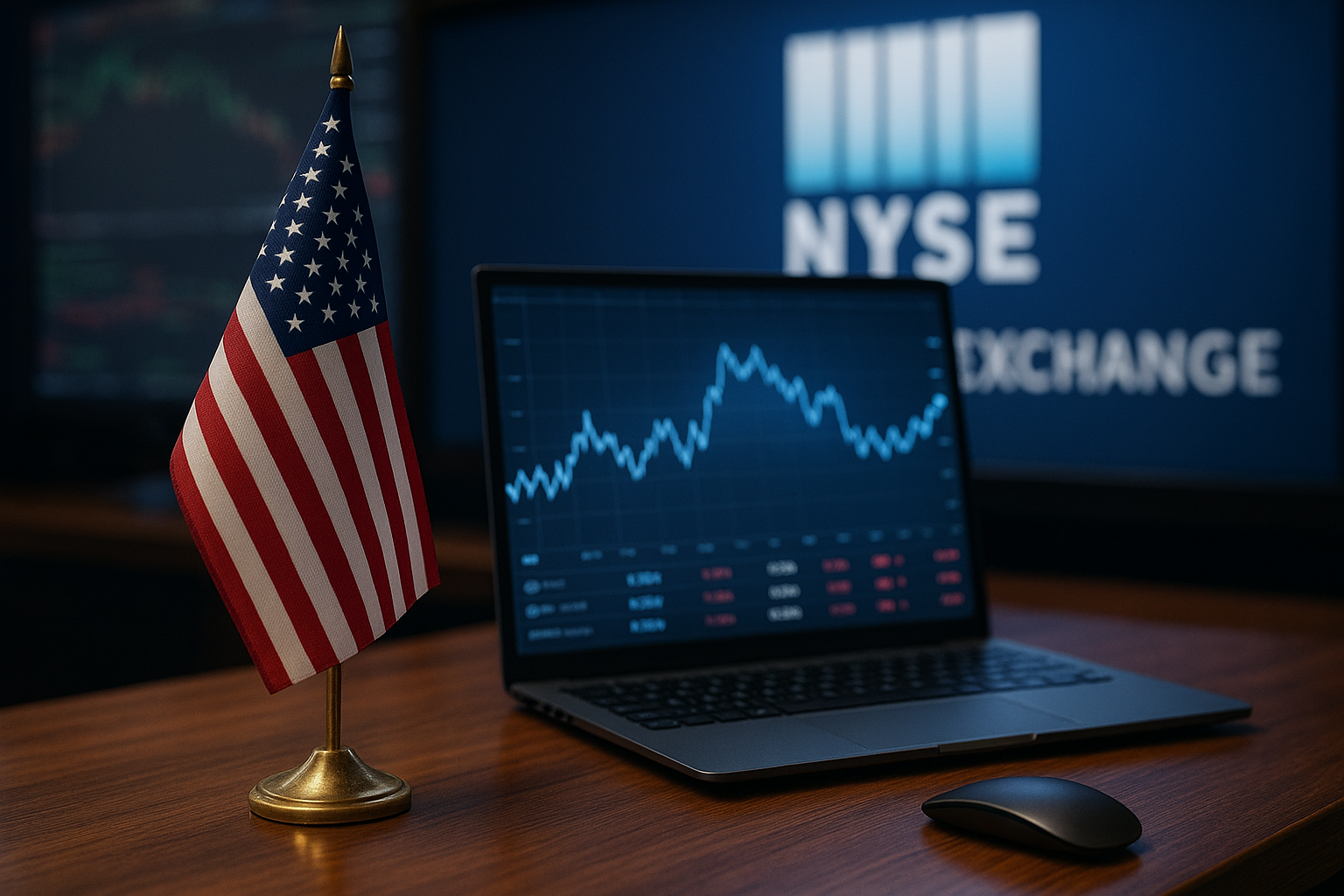In a move that’s sending tremors through global markets, President Trump has announced sweeping new tariffs on copper, semiconductors, and pharmaceutical imports—escalating a fresh front in trade tensions that now threatens to destabilize U.S.–EU economic relations. The announcement, delivered Tuesday from the White House Rose Garden, is the administration’s latest effort to fortify domestic industries ahead of the 2026 elections, but it’s already drawing sharp rebukes from Brussels and unsettling global investors.
The European Union responded swiftly, calling the new tariffs “discriminatory and destabilizing,” and signaled retaliatory measures are being considered. Markets reacted with caution: U.S. Treasuries rallied, copper miners lagged, and safe-haven flows returned to gold. For investors, the renewed trade volatility demands both vigilance and repositioning.
A Policy Gambit with Global Consequences
The newly expanded tariffs apply a 50% duty on copper imports, alongside additional levies targeting high-end semiconductors and bulk pharmaceuticals. These categories account for over $180 billion in annual U.S. imports, with the EU, China, and India among the top exporters.
Trump justified the action as a national security imperative, citing America’s growing dependence on foreign-sourced critical materials and IP-sensitive components. “We’re not going to let hostile nations control our supply chains,” he said.
Yet the economic fallout may be swift. According to a flash analysis from Barclays Research, the new tariffs could shave 0.3% off U.S. GDP in Q3 if retaliation materializes. European officials have hinted at countermeasures on agriculture, aerospace, and luxury goods, sectors that carry significant weight in U.S. export balances.
The EU Trade Commissioner, Margrethe Vestager, stated in an official press release, “We strongly oppose these tariffs and will seek WTO consultation while preparing targeted reciprocal actions if necessary.”
Why This Matters for Investors
Markets had largely priced in status quo trade policies after two years of relative calm. This sudden escalation resets the narrative and introduces new cross-border risk premiums. Already, we’ve seen:
- A flight to safety in bonds: 10-year U.S. Treasury yields dipped below 3.85% on the news.
- Gold surged 1.4%, nearing $2,100/oz, as geopolitical hedging returned.
- European equity indexes, including the CAC 40 and DAX, fell sharply in early trading.
Meanwhile, semiconductor and pharma stocks were caught in a crossfire. Intel (INTC) and Micron (MU) slid as investors questioned supply chain exposure, while Pfizer (PFE) and Teva Pharmaceuticals (TEVA) saw modest drops, reflecting potential supply cost spikes.
“Markets hate uncertainty, and what we’re seeing now is a recalibration of expectations around global cooperation,” said Emily Zhang, senior global strategist at HSBC, in an interview with Bloomberg. “Trade policy risk is now a top-tier macro variable again.”
Future Trends to Watch
1. Central Bank Reactions
With trade tensions rising and inflationary pressures back in play (especially for copper and pharma), watch for how central banks respond. The Federal Reserve may adopt a more cautious tone on rate cuts, while the European Central Bank (ECB) will weigh currency stability vs. growth support.
2. Corporate Earnings and Guidance
As Q2 earnings season approaches, expect heightened focus on trade sensitivity in supply chains. Multinationals that rely on cross-border component flows—especially in tech and healthcare—may issue more conservative outlooks.
3. U.S.–EU Trade Relations
Track any developments around WTO filings, EU retaliation, or exemption negotiations. The Biden administration previously negotiated carve-outs for allies—will Trump follow suit, or double down?
Key Investment Insight
To navigate this phase of policy-induced volatility, investors should consider:
- Shifting toward defensive assets: U.S. Treasuries, gold ETFs (e.g., GLD), and utilities may offer near-term refuge.
- Rebalancing international exposure: Reduce overexposure to trade-sensitive sectors and increase allocation to domestic-facing industries.
- Monitoring policy beneficiaries: Domestic copper refiners and U.S.-based pharmaceutical manufacturers could outperform if protectionist trends hold.
ETFs such as iShares U.S. Healthcare Providers ETF (IHF) or SPDR Gold Shares (GLD) may offer exposure to policy-aligned sectors with inflation hedging characteristics.
Amid rising uncertainty, strategic positioning is key. Investors should stay closely tuned to both central bank signals and trade negotiations, as their outcomes will shape capital flows, sector rotations, and equity sentiment in the weeks ahead.
For daily updates on the policies shaping markets and the companies caught in the crossfire, turn to MoneyNews.Today—your trusted lens into the world of investor-focused financial intelligence.





